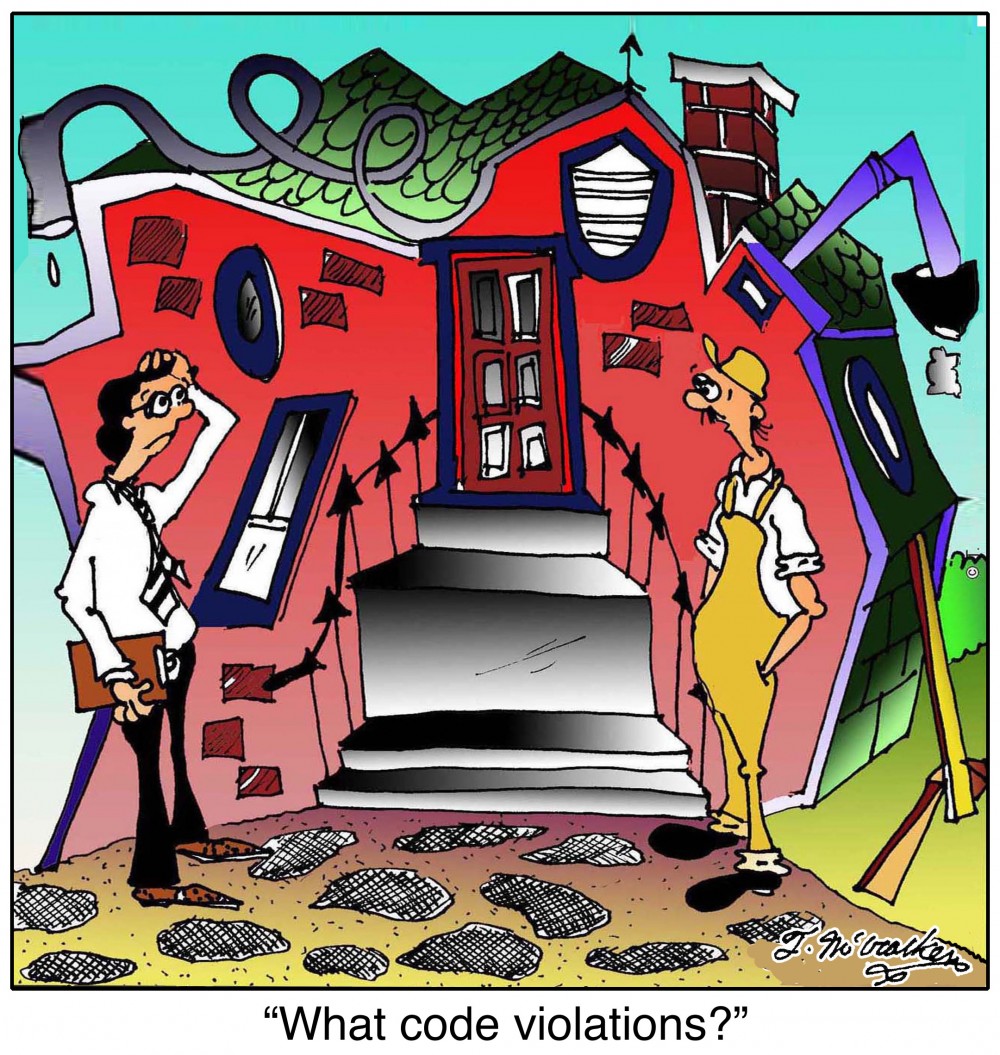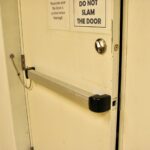I received the comment below on my post about the childrens’ museum doors with applied panels painted to look like stone. It’s a good question, so I’m turning it into a post of its own.
“Lori – What do you do when you find these doors? Do you ever notify management/maintenance that these are a safety hazard and are not in compliance with code? I mean, these doors are pretty bad, I don’t even notice an “Exit” sign (despite exit devices) at the door and there is no mistaking that these could easily be missed as exits in the event of an emergency… I don’t think I’d want to be in a room that had the exits disguised like this… so back to the original question – how do you use your knowledge to educate and change these violations?” – Michael Rebbec, Ingersoll Rand Security Technologies
 Like I said…good question. I don’t have any *power* when it comes to enforcing requirements, so I can only educate. Unfortunately, it’s hard to get anyone to care if you’re not the AHJ (Authority Having Jurisdiction). In very unsafe situations (I talked about one on this post) I have sent letters to the establishments explaining why their situation is dangerous. Sometimes they listen, sometimes they don’t. In other cases I use the photos to educate as many people as I can reach with this site, so that similar mistakes may be avoided on other projects.
Like I said…good question. I don’t have any *power* when it comes to enforcing requirements, so I can only educate. Unfortunately, it’s hard to get anyone to care if you’re not the AHJ (Authority Having Jurisdiction). In very unsafe situations (I talked about one on this post) I have sent letters to the establishments explaining why their situation is dangerous. Sometimes they listen, sometimes they don’t. In other cases I use the photos to educate as many people as I can reach with this site, so that similar mistakes may be avoided on other projects.
Before I was able to share information via this website I often felt like I was beating my head against the wall. I did a lot of training back then, so I was able to reach several hundred people per year, but now I’m able to talk to that many people each week! Call me crazy, but I find that really exciting!
One of my lowest code-related moments happened about 8 years ago. I had visited a local college and while I was looking around a dormitory with the facility director I noticed that the stair discharge doors had mag-locks and panic devices, but no motion sensors or emergency push buttons. I asked him about the doors and he said that they had added the mag-locks because the kids were letting their friends (and their friends’ beer) in through the emergency exits. The mag-locks were locked all the time, and only unlocked on fire alarm. Anybody trying to exit during a non-fire emergency would be trapped in the stairwell. Even years later my heart sinks thinking about that conversation.
It gets worse. Shortly after that, I taught at a regional conference for New England code officials, and at lunch I coincidentally sat at a table with a fire marshal from the same town as the college I had visited. It seemed like fate, so I asked him about the situation. He didn’t get all excited about it as I had hoped. His answer was to shrug and say, “What do you expect us to look at every door?”
No. I don’t. With the amount of stuff any AHJ has to look at / know about, I don’t see how they could look at every door in every building and understand every piece of hardware they see. That’s why building owners need to have their fire and egress doors inspected annually per the requirements of NFPA 80 and NFPA 101. There will be a tragedy and the media, insurance companies, AHJs, and building owners will start paying attention to the inspection requirements. Until then, I’m going to keep talking about it. Aw…who am I kidding? I won’t shut up then either. 🙂
What do YOU do when you see a code problem?
You need to login or register to bookmark/favorite this content.






1) If I have a camera I like to take pictures and send them to this nice lady who has a neat web site.
2) Depends on violation I may let it go or if a problem send letter, email, photos to ahi, fd, sometimes mayor, city manager.
How do you know I’m nice? My husband calls me the “Queen of Mean.” 🙂
Lori –
I see the same magnetic lock problems all the time!
The “bad” part is that a large amount of people (not all) believe that
doors that unlock when the fire alarm system is activated complies with the Code.
Keep spreading the word! I’m on your team.
Thanks Peter!
When will people realize that an emergency does not always involve a fire? Think about that mall shooting in Nebraska, the Fort Hood shooting, Columbine, the list goes on and on…Here’s what I tell people when I’m talking about life safety situations: if you’re in a building, and there’s a shooter, or some other non-fire emergency, pull the fire alarm. First, it may disorient the attacker, but it will also release delayed egress devices, mag locks, etc so you can get out when you need to.
As a professional locksmith in California, we have the ever present threat of earthquakes with which to be concerned. No, there is not always a fire, and no, the power does not always go out.
As the father of three, two of whom are in college, I would have been on the college like a bulldog until they fixed the maglock situation. Send enough letters and pictures, go to the news (see the story about the Staples Center in Los Angeles), whatever it takes. We have customers ask us to violate fire and life safety codes all the time. It is almost always due to ignorance of the codes. As professionals, we owe it to the public at large to help prevent a tragedy.
Just found out about your blog while doing some research. I have really enjoyed it.